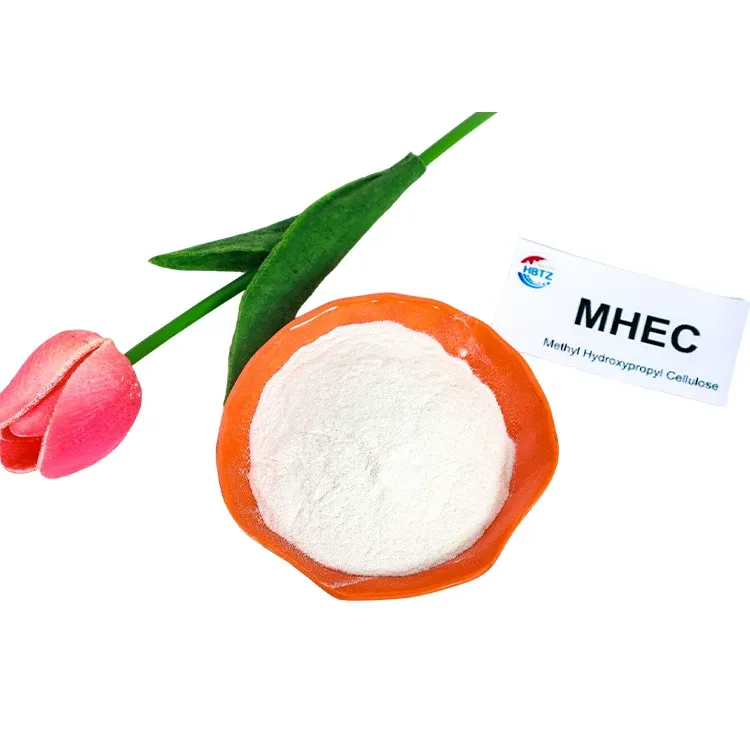
MHEC Cellulose—High Water Retention for Mortars & Paints
mhec cellulose is a key solution in the chemical industry, specifically within the Fine chemical industry and the cellulose ether segment. This article explores how Hebei Tangzhi Technology Co., Ltd. supports professionals with durable, high‑performance products, and explains why this product is an ideal choice for businesses in these sectors.

Table of Contents
- mhec cellulose Overview
- Benefits & Use Cases of mhec cellulose in cellulose ether
- Cost, Maintenance & User Experience
- Sustainability & Market Trends in chemical industry
- Conclusion on mhec cellulose from Hebei Tangzhi Technology Co., Ltd.
mhec cellulose Overview
MHEC (Hydroxyethyl Methyl Cellulose), sometimes referenced as hydroxymethyl ethyl cellulose, is a nonionic, water‑soluble cellulose ether engineered for robust rheology control, water retention, and workability in dry‑mix mortars, coatings, and detergents. In the fine chemical value chain, mhec cellulose bridges formulation science with field performance, enabling consistent viscosity build, sag resistance, and open time across variable cement and gypsum systems. Typical commercial grades span a broad viscosity spectrum (e.g., medium to high viscosity measured in a 2% aqueous solution, Brookfield), with options for rapid wet‑out via surface-treated powder for dust control and lump‑free dissolution.
For B2B decision makers, specification flexibility matters. Hebei Tangzhi Technology Co., Ltd. supplies mhec cellulose in tailored particle sizes, moisture windows, and dissolution profiles to match regional sand, cement, and polymer powder variations. Consistent batch‑to‑batch rheology helps reduce line changeovers, stabilize quality KPIs, and streamline technical approvals. Whether your teams are scaling a tile adhesive line or optimizing gypsum putty, partnering with a reliable manufacturer like Hebei Tangzhi ensures dependable supply, technical support, and documentation (COA, MSDS) to accelerate time‑to‑market.
Benefits & Use Cases of mhec cellulose in cellulose ether
In cellulose‑ether‑based formulations, mhec cellulose is a cornerstone additive for dry‑mix mortars: cement tile adhesives (CTA), EIFS/ETICS adhesives and basecoats, gypsum plasters, wall putties, self‑leveling compounds, and repair mortars. Its high water retention reduces premature hydration, promoting fuller cement hydration and stronger bonds. Rheology modification yields creamy, non‑slump spreads, excellent anti‑sag on vertical applications, and longer open/adjustability times—key to installer productivity and reduced rework. In waterborne architectural coatings, MHEC promotes stable viscosity, spatter control, and film uniformity; in household and industrial cleaners, it provides thickening and suspension without ionic interactions that can destabilize surfactant systems.
Competitive advantages include broad pH tolerance, electrolyte robustness, and synergy with redispersible polymer powders and specialty additives (e.g., starch ethers, defoamers). Hebei Tangzhi Technology Co., Ltd. offers application‑driven grades—fast‑dissolving for short mixing cycles, high‑retention grades for hot climates, and balanced rheology for pumpable screeds. With hands‑on formulation guidance and pilot‑scale testing, the company helps producers calibrate workability vs. strength, optimize dosage, and secure consistent performance across seasons and sites.
Cost, Maintenance & User Experience
Total cost of ownership with mhec cellulose hinges on dosage efficiency, processability, and field reliability. Typical mortar dosages are low (often well below 1%), yet the performance lift—better water retention, reduced slip, fewer callbacks—translates into measurable ROI via higher line throughput and fewer site complaints. For procurement teams evaluating methyl hydroxyethyl cellulose price, key drivers include viscosity grade, substitution level, surface treatment, order volume, and logistics. Hebei Tangzhi Technology Co., Ltd. helps buyers balance cost and capability by recommending fit‑for‑purpose grades that minimize overdosing while preserving workability windows and final strength.
Maintenance is straightforward: store in dry conditions, avoid caking, and add to vortexed water or premix with aggregates to prevent clumping. Producers in the fine chemical industry consistently report improved consistency lot‑to‑lot and smoother mixing curves with Tangzhi’s grades, leading to shorter QC cycles and stable rheology targets. On job sites, applicators note easier trowel glide and longer open time, especially in hot, windy environments—tangible user experience benefits that reinforce brand reputation and lower the hidden costs of rework.
Sustainability & Market Trends in chemical industry
Sustainability is reshaping dry‑mix mortars and coatings. Cellulose ethers like mhec cellulose originate from cellulose, a renewable resource, and support low‑VOC, water‑based formulations aligned with green building codes and evolving regulations. As construction migrates toward energy‑efficient envelopes (EIFS/ETICS) and durable, low‑emission interiors, demand for robust rheology modifiers is growing. At the same time, supply‑chain resilience and transparency—from pulp sourcing to additive processing—are increasingly important to B2B buyers and auditors.
Hebei Tangzhi Technology Co., Ltd. positions itself as a forward‑thinking, eco‑conscious partner, focusing on consistent quality, responsible sourcing, and data‑backed technical support to help customers meet regulatory and customer requirements. Market dynamics—including raw material fluctuations and regional construction cycles—can influence availability and pricing. Tangzhi’s consultative approach and diversified grade portfolio help customers navigate volatility while staying on spec, on schedule, and on sustainability targets.
Conclusion on mhec cellulose from Hebei Tangzhi Technology Co., Ltd.
From tile adhesives to gypsum plasters and waterborne coatings, mhec cellulose delivers reliable water retention, rheology control, and applicator‑friendly workability—cornerstones of performance in the fine chemical industry’s cellulose ether segment. Hebei Tangzhi Technology Co., Ltd. stands out with application‑tuned grades, dependable supply, and practical technical support that helps B2B teams hit quality, cost, and sustainability goals.
- Ready to optimize your formulations? Contact us: email: admin@tangzhicellulose.com
- Visit our website: https://www.tangzhihpmc.com
- Explore product details: Hydroxyethyl Methyl Cellulose (MHEC)
-
Reliable Hydroxyethylcellulose Suppliers for Industry & Sustainability | Tangzhi HPMCNewsNov.23,2025
-
Top Ethyl Cellulose Supplier – Quality, Sustainability, and Industrial SupportNewsNov.23,2025
-
Trusted CMC Powder Suppliers for Food, Pharma & Industrial Use | Tangzhi HPMCNewsNov.22,2025
-
Reliable Cellulose Powder Suppliers for Sustainable Industry Solutions | Tangzhi HPMCNewsNov.22,2025
-
Trusted Cellulose Acetate Sheet Suppliers for Sustainable IndustriesNewsNov.21,2025
-
Top Cellulose Acetate Producers | Sustainable Bioplastic Manufacturing InsightsNewsNov.21,2025





















